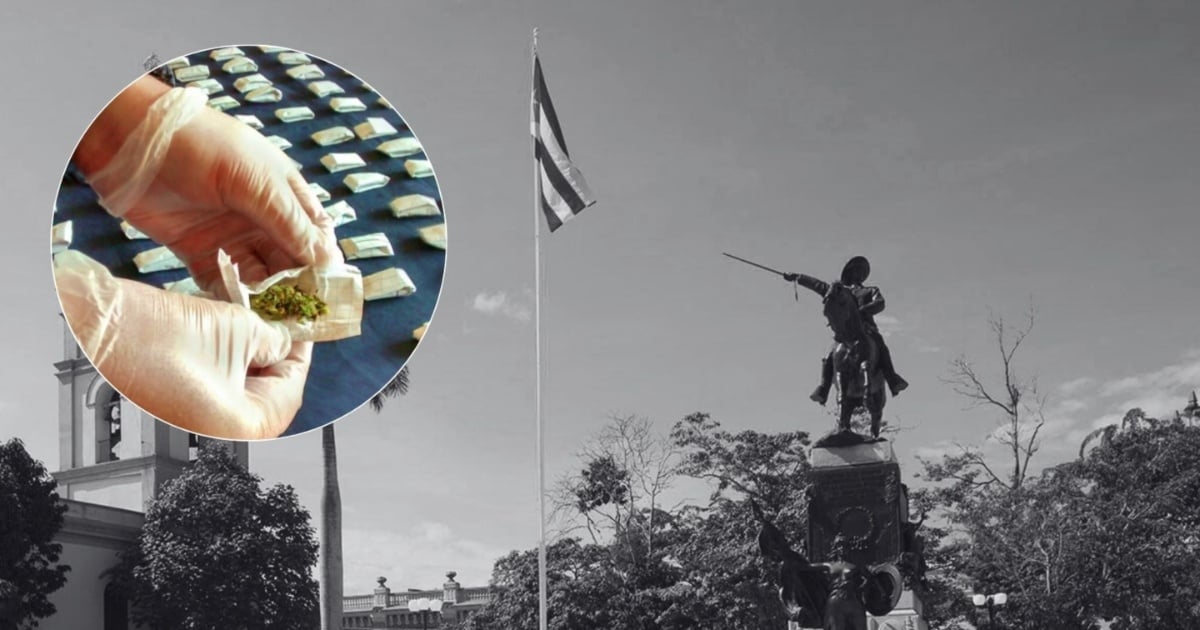
Related videos:
The Cuban regime admitted this Sunday that marijuana, hashish, and cocaine are trafficked in the province of Camagüey, primarily in the capital city, and that the territory is used as a "springboard" to transport drugs to the capital of the country.
A note from the local official newspaper Adelante reported that the trafficking and sale of marijuana, hashish, and cocaine is predominantly occurring in the municipality of provincial capital, with a higher incidence in eight popular councils and in Florida and Guáimaro.
Based on information published by the Technical Research Department (DTI) of the Ministry of the Interior in the province, it has been revealed that there are still cases of trafficking and consumption of psychotropic drugs, including Tramadol and Carbamazepine that are imported, along with a smaller volume of those produced domestically.
The official press highlighted that the consumption of narcotics has increased among young people and that the price of these substances has also risen.
In this regard, they revealed that individuals under 18 years old arrive at the Eduardo Agramonte Piña pediatric hospital, some in serious and critical condition, intoxicated due to drug use.
From Camagüey to the west
The province, on the other hand, is used as a platform for the transit of drugs to the capital.
"To a lesser extent, there are intentions to carry out drug operations with suppliers from Las Tunas, Granma, and Santiago de Cuba, while criminal networks use Camagüey as a springboard for transit to the capital of the country," reported regime-associated media.
For sales and supply, they stated, "new information technologies" are used, primarily social networks, in an attempt to "evade police action."
The authorities, acknowledging the problem posed by the circulation of drugs and psychotropic substances in the country, admitted that although they are "confronting" the crime, "there is no noticeable impact on the containment of drug sales for the purpose of addiction."
In their defense, they argue that the majority of the marketed medications are imported, making control difficult.
"War" on drugs
The Cuban regime claims that it has initiated a war against drug trafficking, supporting its discourse of zero tolerance towards drugs.
The Prime Minister, Manuel Marrero Cruz, emphasized that synthetic substances are being introduced into the country through "new methods and techniques" and that this phenomenon affects the safety of the island.
In the current context of public complaints and an increase in reports in independent media about the use of "the chemical," the Cuban government proposed the creation of the National Drug Observatory (OND), an institution under the direction of the Ministry of Justice (Minjus) that will be responsible for monitoring and overseeing the drug phenomenon on the island.
Through an Early Warning System, they aim to identify new psychoactive substances and minimize the risks associated with their consumption and distribution.
Frequently asked questions about drug trafficking in Cuba
Why is Camagüey considered a "springboard" for drug trafficking in Cuba?
Camagüey is considered a "springboard" for drug trafficking because it serves as a transit point for the transportation of narcotics to the capital of Cuba. According to the news, the capital city and other municipalities like Florida and Guáimaro are hotspots for drug trafficking and consumption, which facilitates their movement towards the western part of the country.
What types of drugs are being trafficked in Camagüey, and what impact do they have on the young population?
In Camagüey, marijuana, hashish, and cocaine are primarily trafficked, in addition to psychotropic drugs such as Tramadol and Carbamazepine. The impact on the youth population is significant, with an increase in the consumption of these substances and cases of young people under 18 arriving at hospitals in critical condition due to poisoning.
What measures is the Cuban regime taking to combat drug trafficking and drug consumption?
The Cuban regime has declared a "war" against drug trafficking with a zero-tolerance policy towards drugs. They have proposed the creation of the National Drug Observatory to monitor the phenomenon and have intensified anti-drug operations in various provinces. However, no significant impact on the reduction of drug trafficking and consumption is evident.
What is the role of social media in drug trafficking in Cuba?
Social media is used by traffickers to evade police action and facilitate the sale and supply of drugs. These platforms allow those involved in drug trafficking to communicate more effectively and discreetly, complicating control efforts by the authorities.
Filed under: